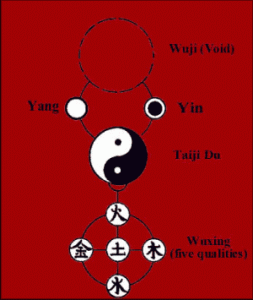Qi: The Life Force
There is no adequate translation to fully illustrate the subtle nuances of the Chinese word Qi in the English language. Some translate it as breath, air and others as an unseen life force. The most widely accepted explanation of Qi is that it is a form of subtle energy.
The old Chinese character for Qi was the symbol for air or breath. The radicals or parts of the Chinese character form an illustration of a stove cooking rice with the invisible steam raising the pot lid. Hence the concept of an unseen, immaterial force animating a material object.
Qi: A Controversial Subject
Qi is a fascinating subject. It is also a very controversial one. How does it work? How can it be developed? Is it dangerous? Is it Real? Millions in China daily practice exercises to improve their Qi.
Acupuncturists insert slim needles into their patients to adjust the flow of Qi in order to heal. A growing number of physicians in every country of the world today use Acupuncture as curative and preventative medicine as well as to produce anesthesia on the operating table.
Monks and spiritual seekers meditate to increase, preserve tonify or sedate their inner Qi and to harmonize it with the Qi of the universe. Martial Artists perform mind and body exercises to increase their internal Qi in hopes of enhancing physical prowess for combat.
Qi: A Universal Concept
Part of the problem in understanding what Qi is stems from the fact that the subject has been shrouded in mystery and superstition. Chinese traditional medicine, shamanism and martial arts myths make it difficult to separate fact from fiction. To the Chinese this is not much of a problem as they do not make a distinction or try to explain it as any specific thing they just call it Qi, the unseen energy.
It is described as an invisible primordial energy residing in all animate and inanimate things. Ancient texts state that Qi arose with the creation of the universe. To the Chinese, Qi is the very stuff of life itself filling the entire universe, permeating rocks, trees, water, clouds, animals and man. Filmmaker George Lucas used this idea as “the Force” in his popular Star Wars movies.
Qi: Primordial Energy of the Universe.
Legends tell us that after the Wuji (void) gave birth to Yin and Yang to form the Taiji Du, Qi emerged from the interaction of the Taiji Du, “Grand Ultimate Principle.” In our Daoist story of creation, this Taiji Du symbol represents the merging of the Yang with the Yin.
The marriage of positive (yang) and negative (yin) energies is reminiscent of our “Big Bang” theory where matter and anti-matter collide in the first milliseconds of creation forming a vibratory force containing the dual qualities of activity and inactivity, motion and stillness, life and death, creation and dissolution.
The blending of these two forces in the first moments of creation is said to have produced the primordial life force known as Qi. Chinese cosmology simply states that universal or primordial Qi is an animating and activating force emerging from the interplay of Yin and Yang as illustrated in the Taiji Du.
The primordial energy is believed to create, bind and permeate all material substance through changing its vibratory state. These states of vibration are similar to those described in quantum physics. Primordial Qi to the Chinese is like the atom that is the building blocks of which the universe is composed. In the Daoist idea the Wuxing (five qualities / element) theory explains how Primordial Qi changes vibration to become all known and unknown substances. Thus nature has Qi and so does mankind.
